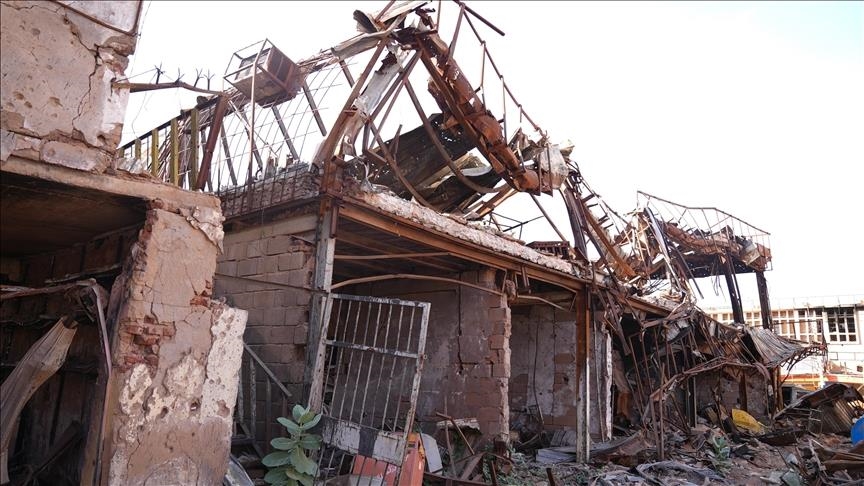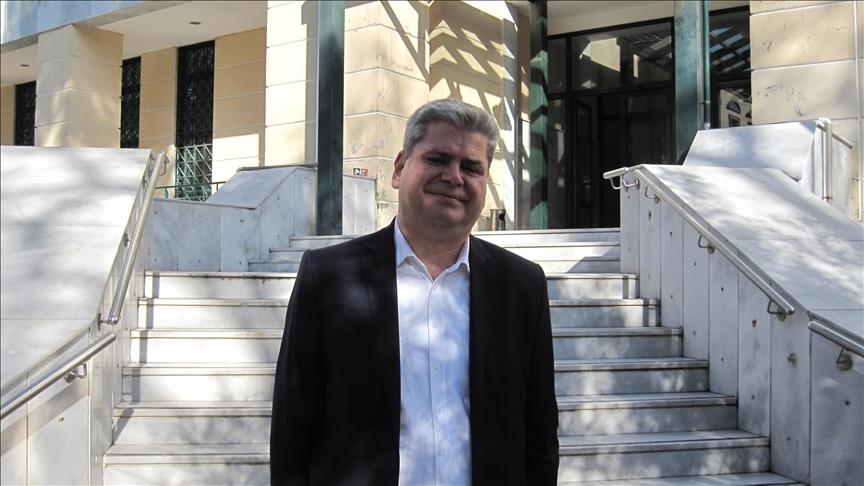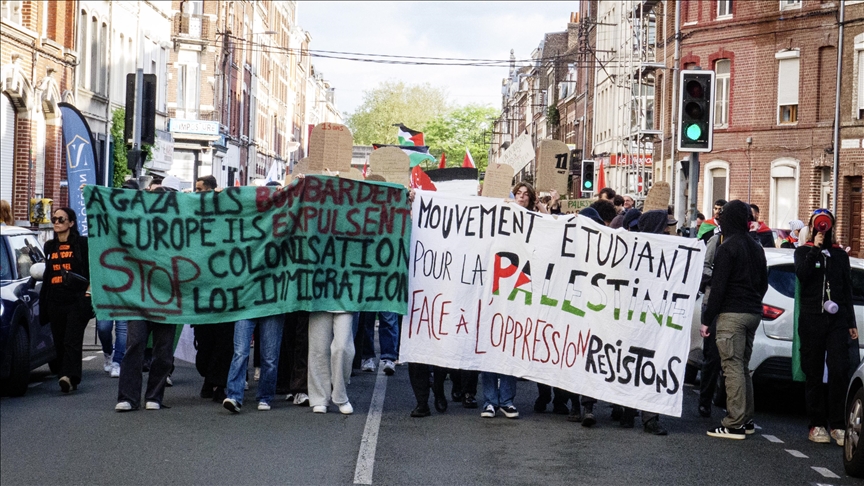As civilians return, unexploded ordnance poses lethal risk
- ‘There is a risk that people will return, and as time passes, these explosive hazards will be forgotten, becoming a silent killer,’ warns Mohammad Sediq Rashid, chief of the UN Mine Action Service in Sudan
- ‘The population of Sudan, especially people living in the urban areas, are largely unaware of the risks of unexploded ordnance,’ says Rashid
ISTANBUL
Displaced Sudanese civilians returning to cities ravaged by over two years of brutal conflict are now facing a new, invisible threat: unexploded ordnance (UXO), landmines, and abandoned munitions scattered across urban neighborhoods, homes, schools, and even hospitals.
“The situation with explosive remnants of war is very, very challenging, very risky, and there should be a proper systematic clearance for the protection of the people,” Mohammad Sediq Rashid, chief of the UN Mine Action Service (UNMAS) in Sudan, told Anadolu.
Since the outbreak of war in April 2023 between the Sudanese Armed Forces (SAF) and the Rapid Support Forces (RSF), heavy weaponry has devastated much of Sudan’s urban infrastructure, particularly in the Greater Khartoum region.
UNMAS has received reports about the presence of anti-tank mines, grenades, mortars and other bombs across Sudan’s war zones.
“Weapons that produce huge amounts of dangerous unexploded ordnance were used,” said Rashid.
“People returning to their areas … will find unexploded ordnance in their homes, on their rooftops, stuck in the walls.”
Even UN and diplomatic compounds, as well as of humanitarian organizations, are contaminated, he said.
“Our colleagues visited seven UN offices and all seven of them require clearance. They strongly recommended that no UN personnel should occupy the offices unless they are properly … cleared and handed over to them,” he added.
Critical infrastructure contaminated
The war not only scarred homes and city blocks but has contaminated vital infrastructure – schools, hospitals, mosques, and roads.
“Thousands of schools are in the war zones … mosques where people are going five times a day … hospitals, clinics, roads … The situation is very, very risky,” Rashid emphasized.
Worse still, the vast majority of Sudan’s urban population lacks awareness of UXO hazards.
“The population of Sudan, especially people living in the urban areas, are largely unaware of the risks of unexploded ordnance,” he said.
Prior to the conflict, an estimated 6 million to 8 million people lived in Khartoum. According to Rashid, some 70-80% have since fled, with many now returning because they feel they have no other option.
These people will be returning without being aware of the grave risks, so sensitization is imperative, he stressed.
To address this, he continued, UNMAS launched awareness campaigns from the very start of the conflict, using both direct and indirect methods.
“We are using direct explosive ordnance risk education, where the trained teams are deployed … and indirect risk education, which involves broadcasting messages through radio. We did this hundreds of times,” he explained.
UNMAS is also providing advisory support to humanitarian teams operating in dangerous zones, he said.
Yet, casualties continue to rise, according to Rashid.
“In the last month, we had 24 casualties because of unexploded ordnance and landmine explosions as well. In the first month after Jazeera state became accessible, more than 20 casualties were reported from just one city.”
Post-war clearance capacity ‘very small’
Rashid warned that without international support, Sudan’s mine-clearing capacity is dangerously inadequate.
“The mine action program remains very small … I would like to call upon those who are in the position to help to increase their support … This is a lifesaving activity.”
Urban clearance is especially complex. “If an unexploded aircraft bomb or a rocket is in residential areas, this requires a different approach … (and) that capacity does not exist in Sudan. We need to bring in more people and more expert organizations,” said the expert.
His biggest fear: “There is a risk that people will return, and as time passes, these explosive hazards will be forgotten, becoming a silent killer.”
Abandoned weapons and criminal gangs
The war has plunged Sudan into one of the world’s worst humanitarian disasters.
More than 20,000 people have been killed and 15 million others displaced, according to the UN. However, some researchers estimate the death toll could be as high as 130,000.
Sudanese political analyst Jihad Mashamoun shed light on another threat facing citizens – weapons abandoned by retreating RSF units that are being used by “criminal gangs,” locally called “Shifshafa.”
“Shifshafa means thieves … and a lot of these criminal gangs are using this abandoned weaponry that they found for their own interests,” Mashamoun told Anadolu.
With the police force currently at less than 20% of its pre-war capacity, these gangs are operating largely unchecked, he said.
On the risk of unexploded ordnance and mines, the analyst warned people against returning to their hometowns until clearance operations are complete.
“People can rebuild their homes, they can rebuild the communities … but they can’t rebuild anything if they’re dead,” he said.
He stressed the need for unified and clear messaging, saying that people should be told to “stay back until the national authorities declare it is safe to return to their homes and neighborhoods.”
Anadolu Agency website contains only a portion of the news stories offered to subscribers in the AA News Broadcasting System (HAS), and in summarized form. Please contact us for subscription options.




